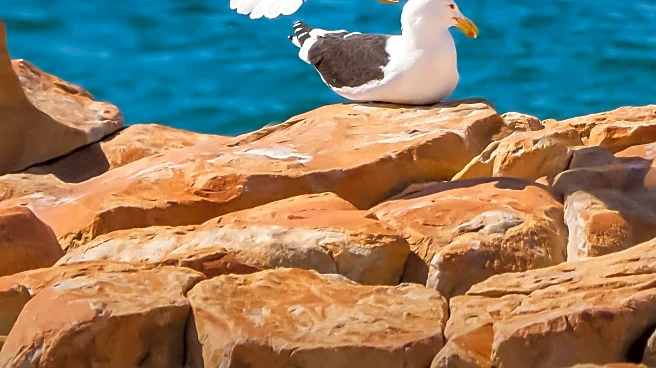What's Happening?
A social media post featuring a glowing dish brush has captivated online audiences, sparking discussions about bioluminescence and bacterial activity. The post, shared by Reddit user u/ephemeralsilliness94,
shows a fluorescent-green brush glowing in a dark room, leading to over 1 million views and tens of thousands of upvotes. The user initially speculated that the glow was due to bioluminescence, a phenomenon where living organisms emit light through chemical reactions. However, after further investigation, the user discovered that the glow was actually due to glow-in-the-dark paint, not bioluminescent microorganisms. The post tapped into a cultural fascination with natural phenomena and contamination in everyday life, prompting scientific explanations and humorous comments from the online community.
Why It's Important?
The viral post highlights the public's interest in scientific phenomena and the potential for misinformation in online discussions. While the initial speculation about bioluminescence was incorrect, the engagement it generated underscores the importance of scientific literacy and critical thinking in interpreting unusual occurrences. The incident also reflects broader societal concerns about contamination and hygiene, as users initially feared bacterial activity on a household item. This case serves as a reminder of the need for accurate information and the role of social media in shaping public perceptions of science and health.
What's Next?
The user’s discovery that the glow was due to paint rather than bioluminescence may lead to further discussions about the reliability of information shared on social media platforms. It could prompt users to be more cautious and seek expert opinions when encountering seemingly extraordinary phenomena. Additionally, the incident may inspire more content creators to explore scientific topics, potentially increasing public interest in science and encouraging educational content that demystifies complex subjects.
Beyond the Headlines
This event illustrates the intersection of science and social media, where viral content can quickly spread misinformation or spark curiosity. It highlights the ethical responsibility of content creators to verify information before sharing and the potential for social media to serve as a platform for science communication. The incident also raises questions about the role of humor and entertainment in engaging audiences with scientific topics, suggesting that blending education with entertainment could be an effective strategy for increasing public understanding of science.











